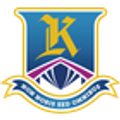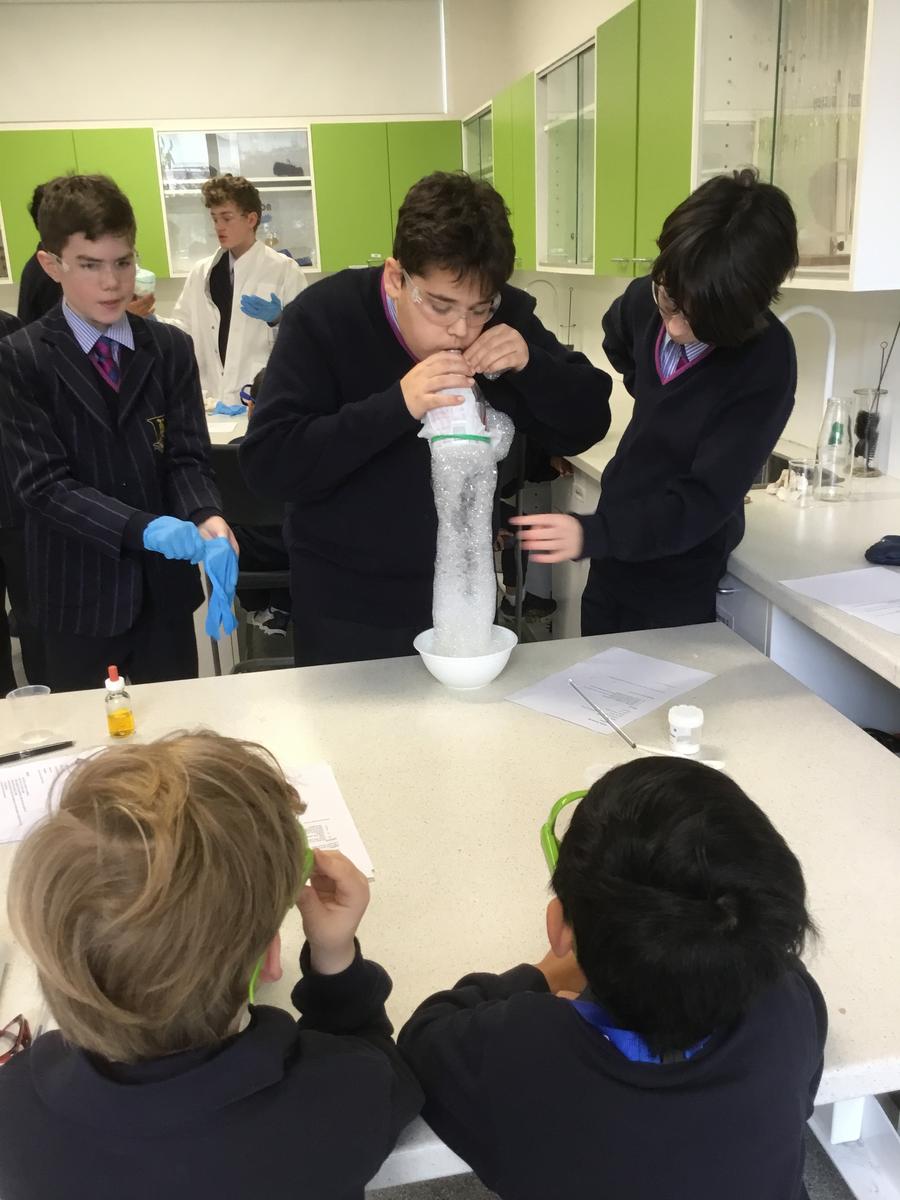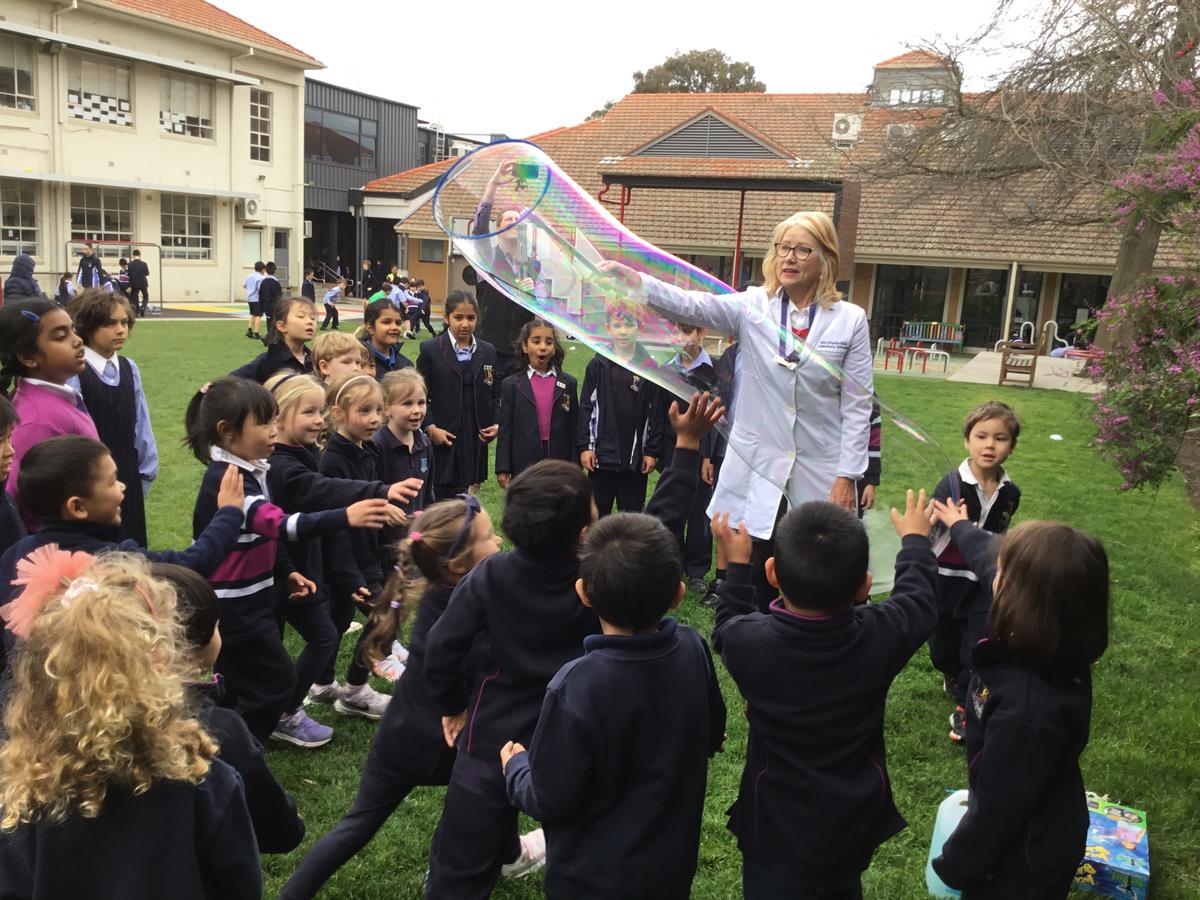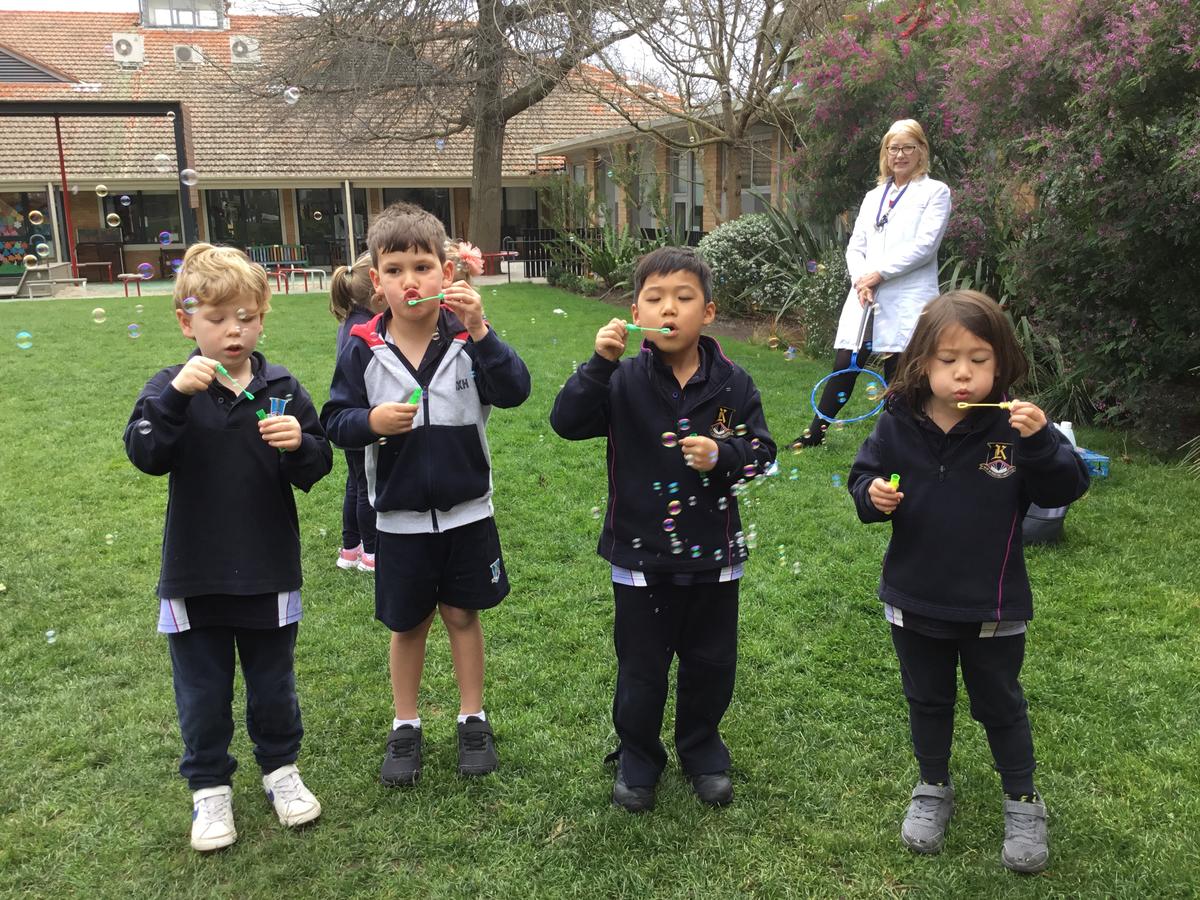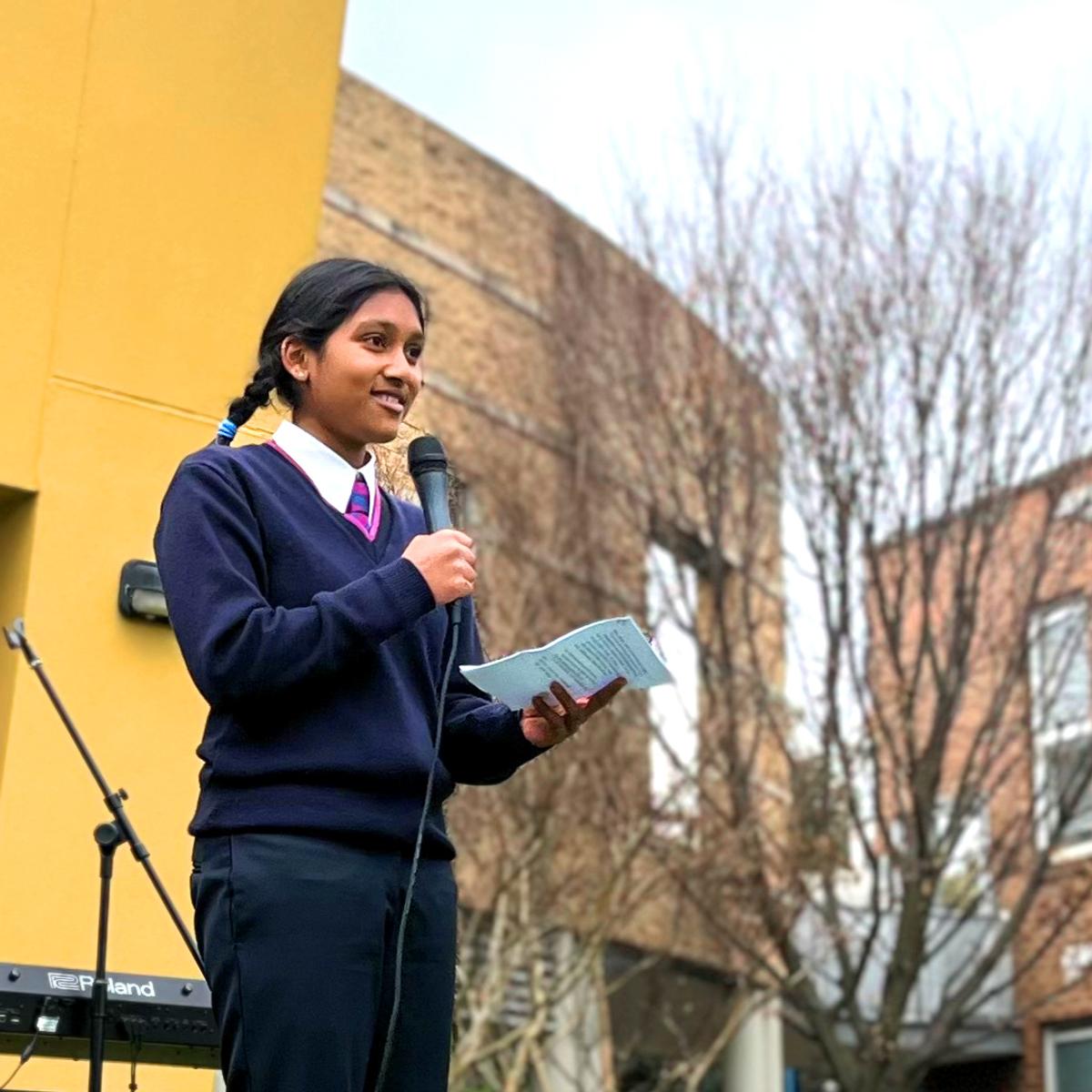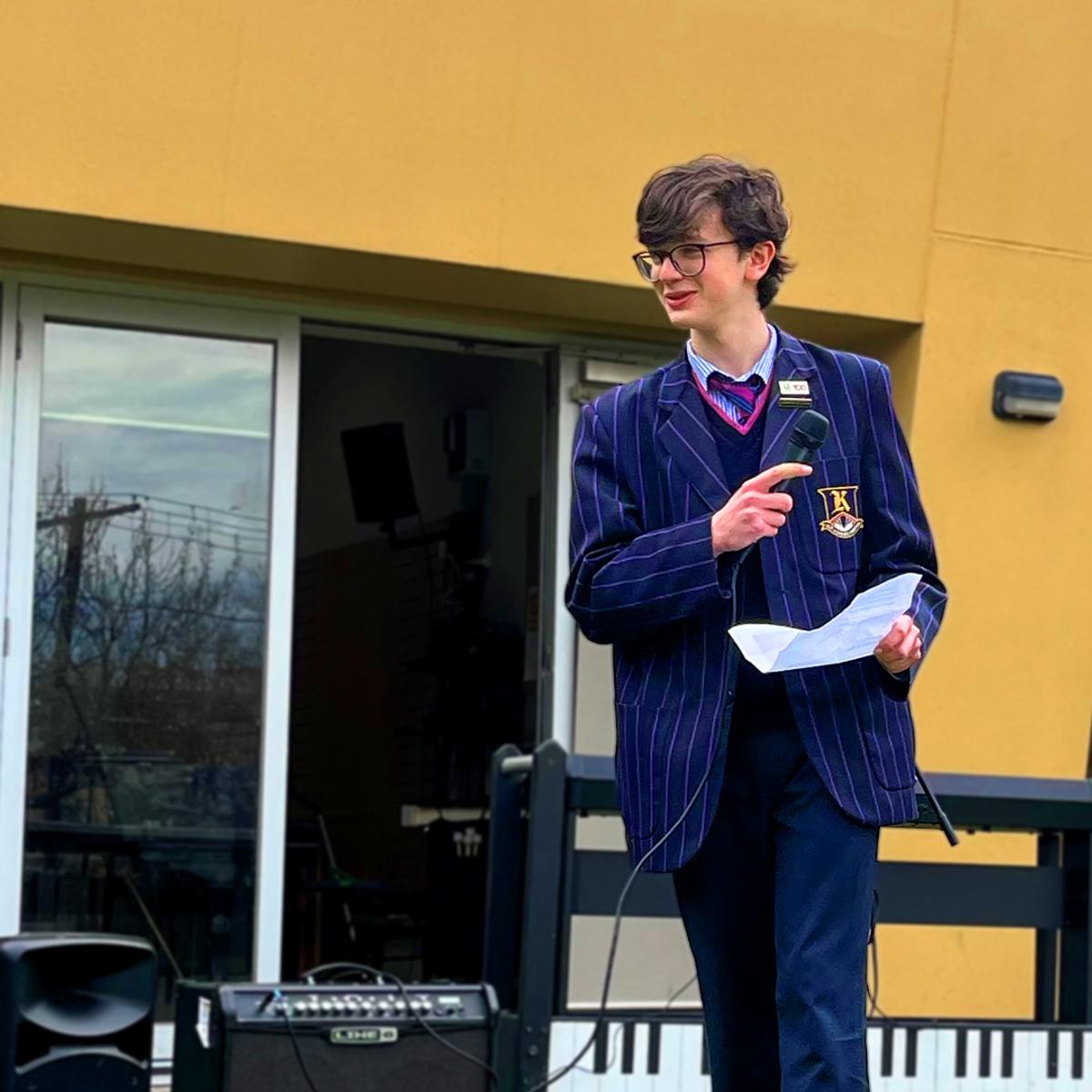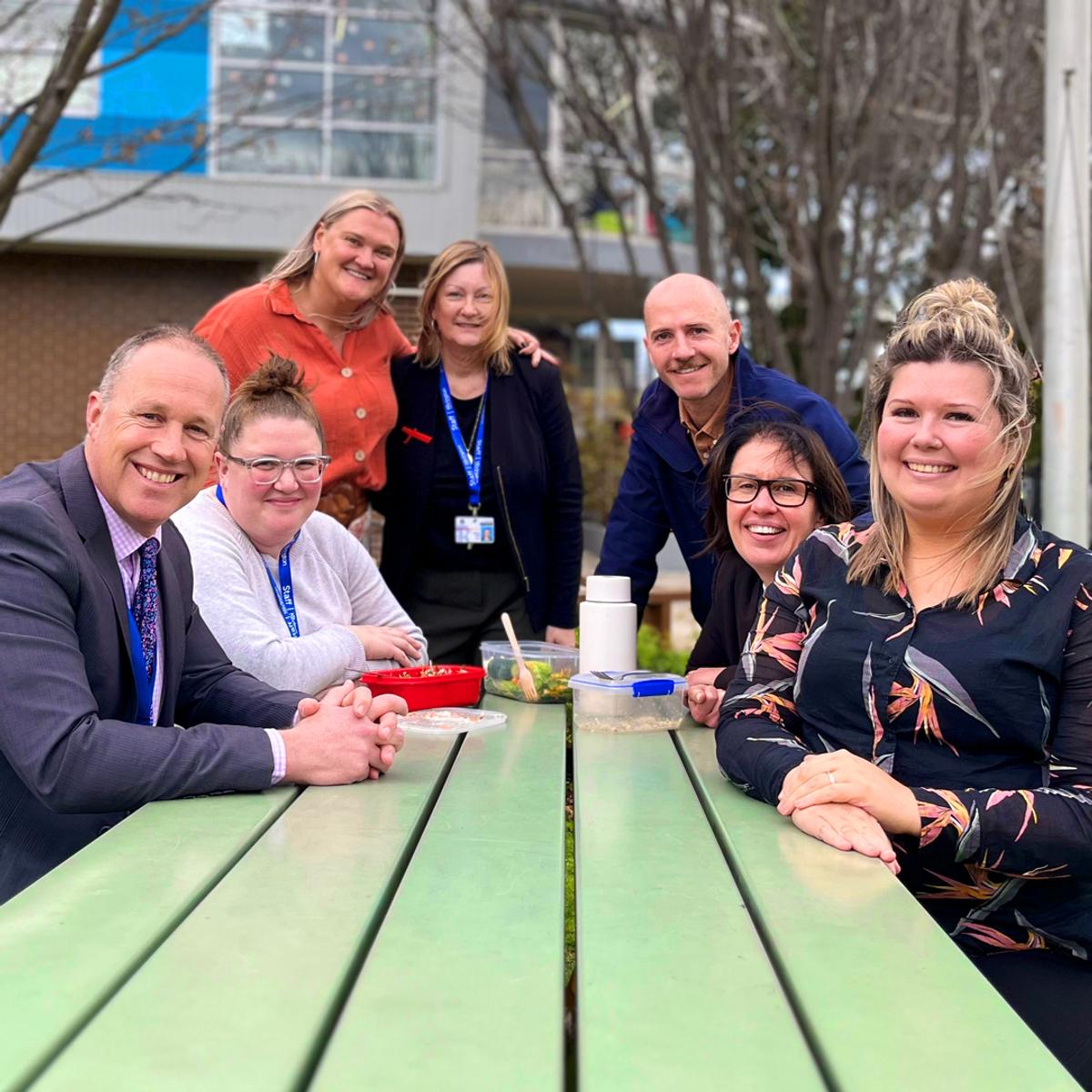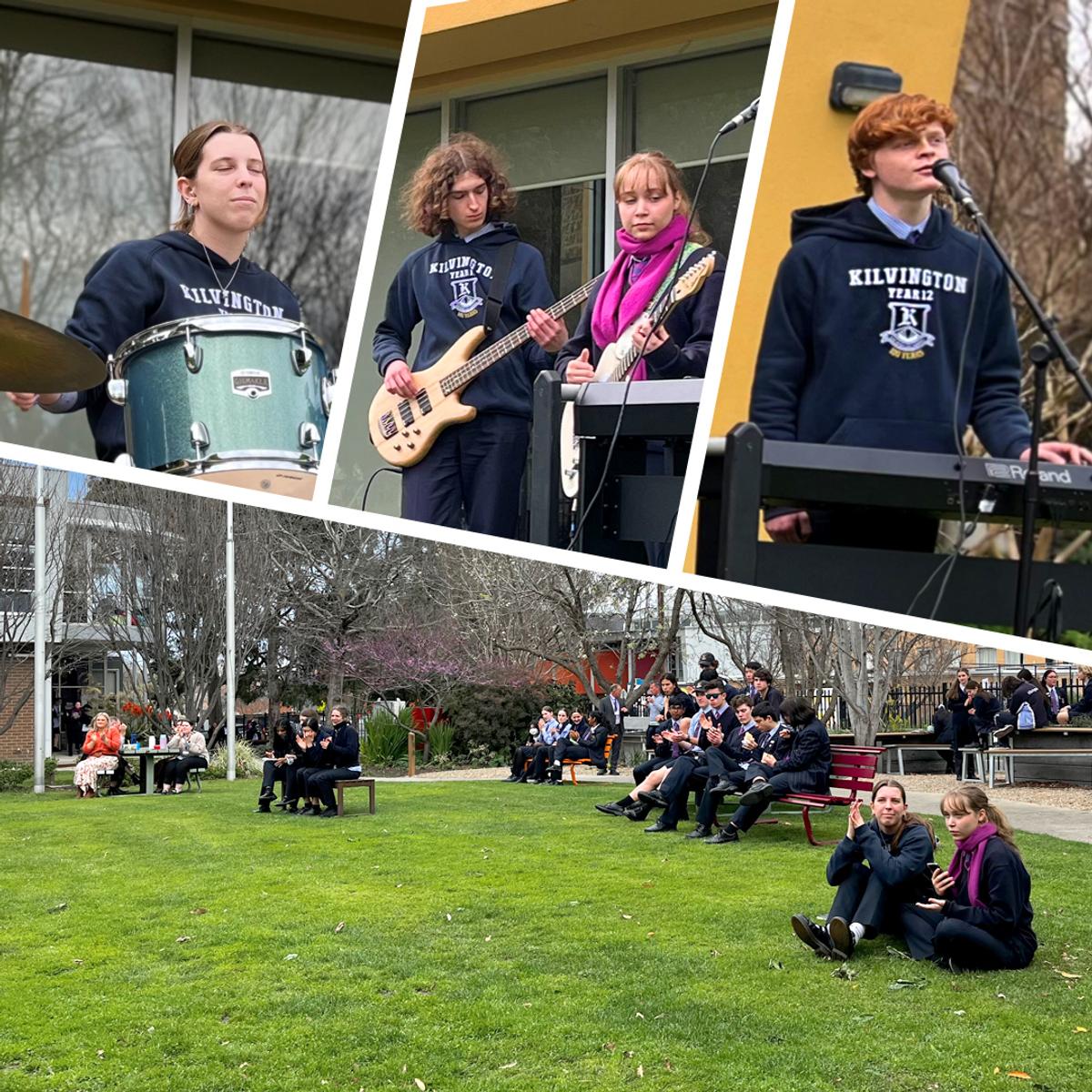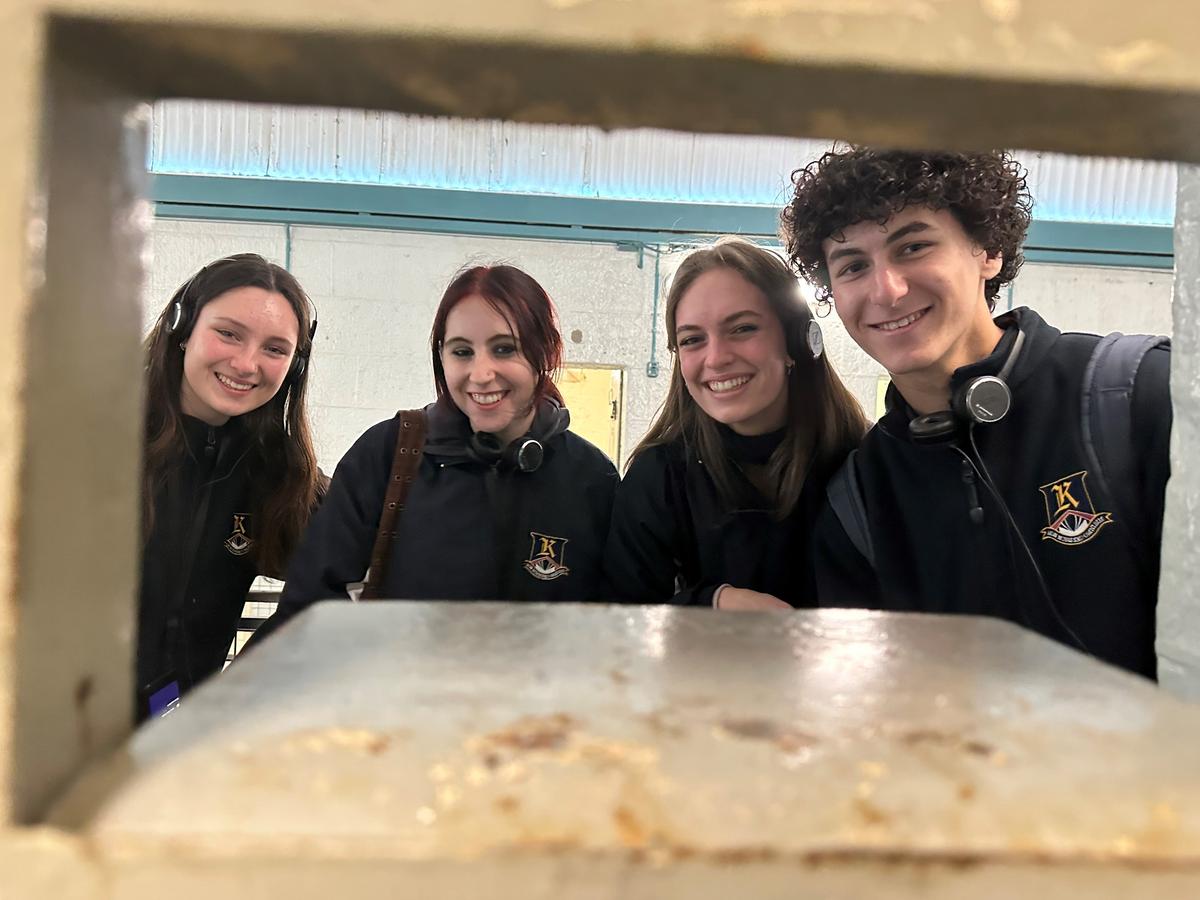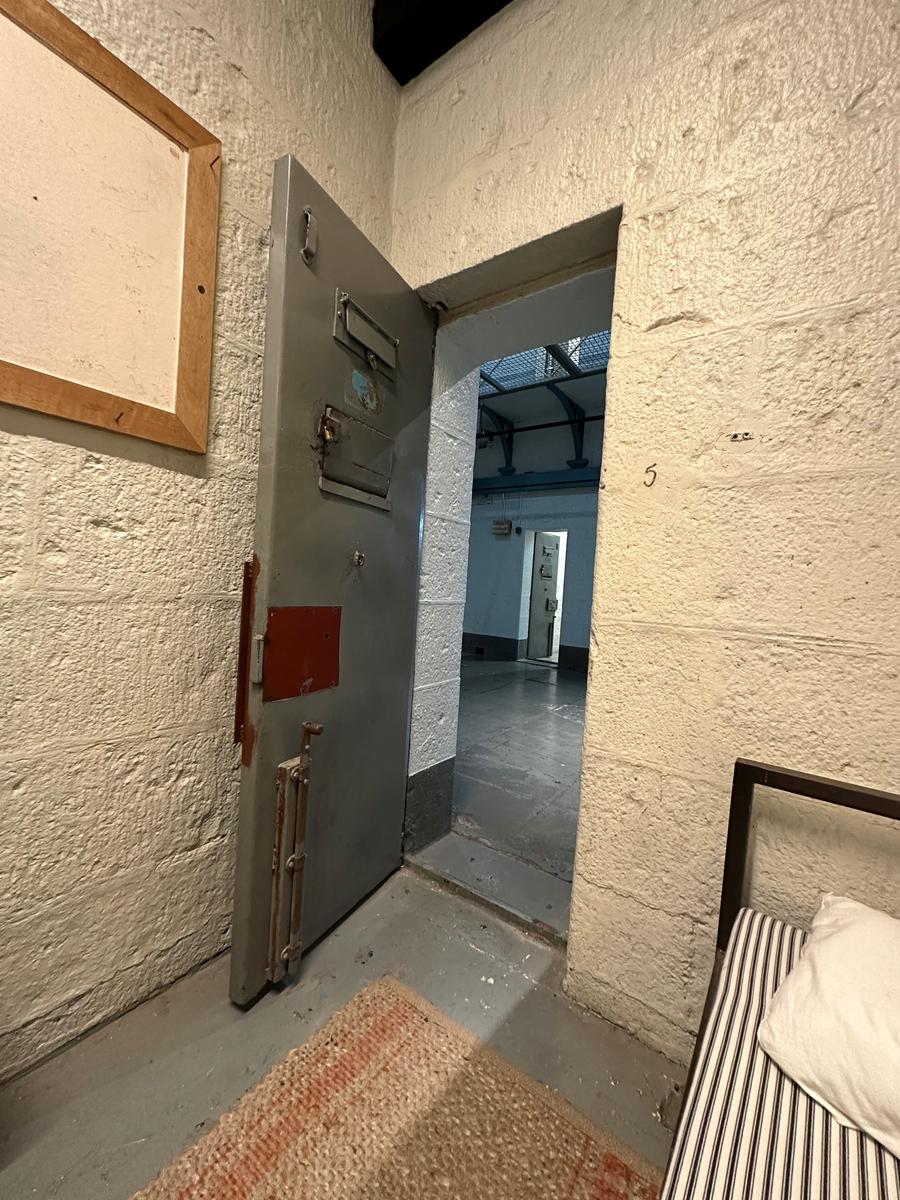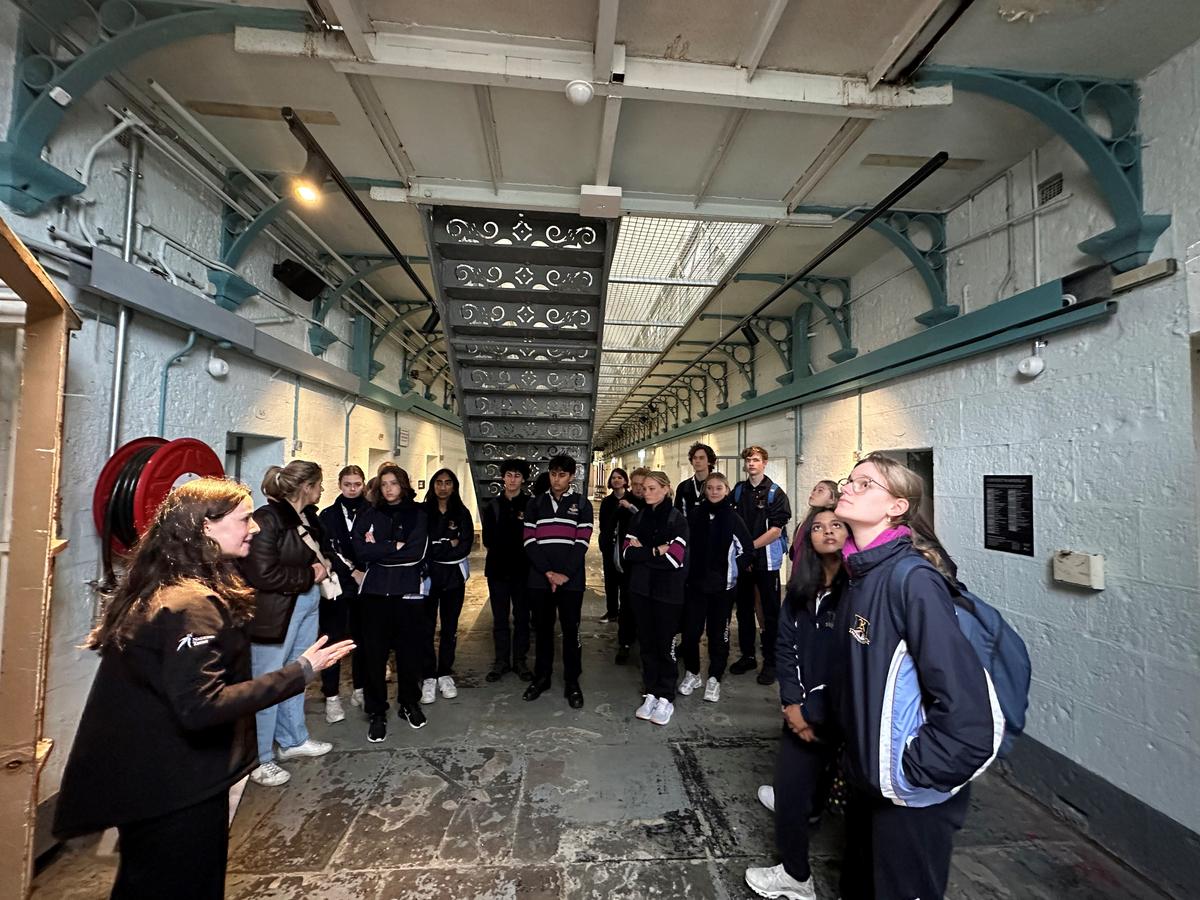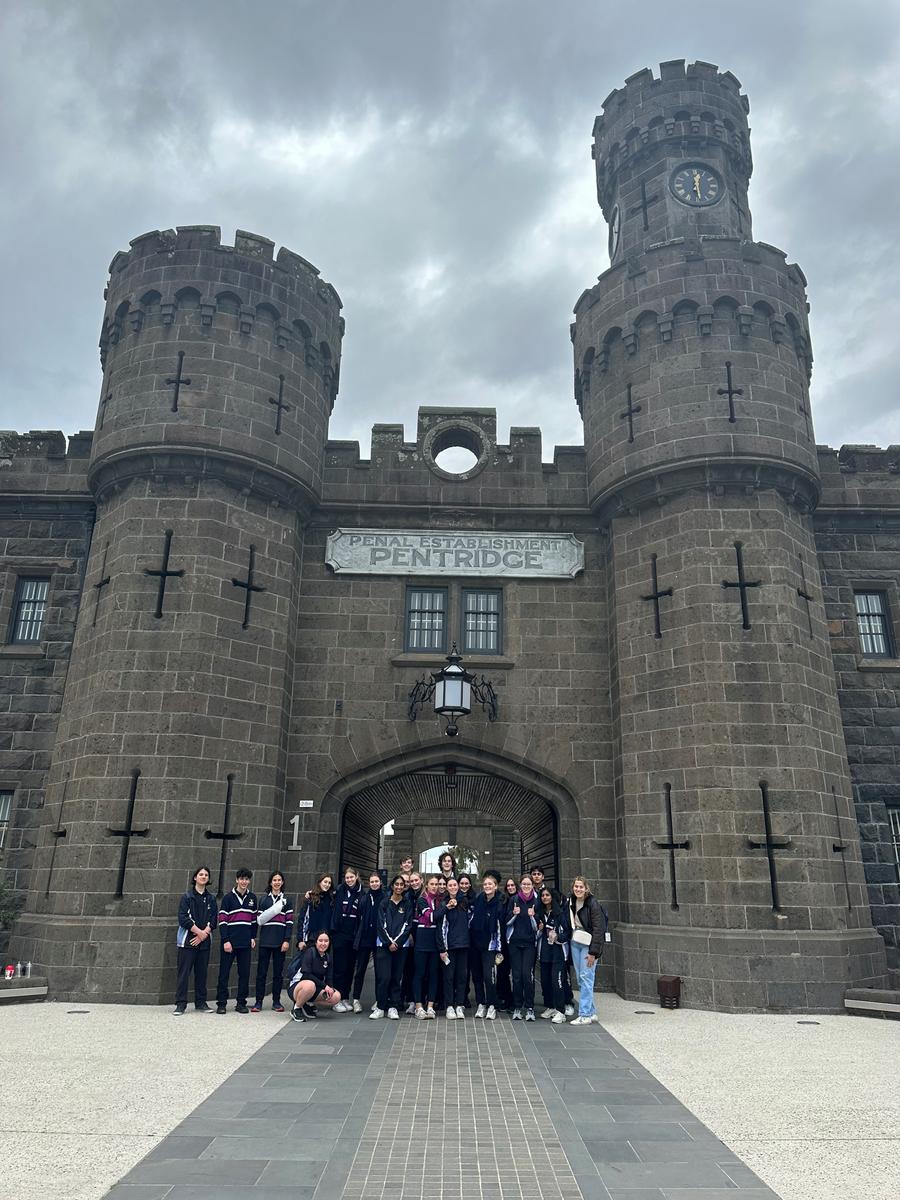School Highlights (cont'd)

ELC and Year 7 Bubble Science experiments
Louise Macfarlane, Academic Dean of Science
On 29 August, ELC students from the Magnolia and Magenta 4YO program had Bubble Science experiments with the Year 7s. The Year 7 Science boys were their teachers for the day.
The boys took their four-year-old friends through crazy currents and bubble snakes experiments. This involved hypothesising (predicting) what would happen, observing the results, and then discussing why the currents were rising and falling. Each session culminated on The Green with giant bubbles and little ELC-blown bubbles.
Thanks go out to our Year 7 Science students who took our inquisitive early learning four-year-olds on this brainy bubble adventure. Each experiment taught the little ones about bubble dynamics, before they were challenged with who could blow the most bubbles!
The Kilvington Writer's Festival
It’s our annual Writer’s Festival at Kilvington this week. Our program provides all students and our greater community with the opportunity to express themselves and celebrate the gift and power of writing in all its creative forms.
We kicked off the week with a 'word symphony' in the forms of masterful music and eloquent poetry from our Years 10, 11 and 12 students. Well done to all!
VCE Legal Studies excursion to the Law Courts and Pentridge Prison
Megan Talbot, Commerce and Humanities Teacher
Recently, the VCE Unit 2 Legal Studies and Sociology students went on an excursion to the Law Courts (where no photos were allowed) and then onto Pentridge Prison.
Both VCE class groups are currently exploring societal structures and mechanisms that seek to address crime within a society. It was an interesting day out.
Year 11 Japanese Calligraphy incursion
Sofia Semechko, Year 11 Japanese
In a recent Japanese language session, Year 11s were given the opportunity to learn calligraphy and to submit some of our works into a calligraphy contest.
At the start of the lesson, we were given some simple instructions about how to write the strokes. These included holding the brush at a forty-five-degree angle and writing on the smooth side of the paper. We also had a demonstration of the strokes for the (旅行) kanji we had previously learnt in class.
However, the writing itself turned out to be much harder. At first, none of our strokes looked anything like what the teacher had written; they were too thick and inky, didn’t flick the way they were supposed to, or just ... went wrong.
But as the session progressed, and multiple sheets of paper filled up with ink, the strokes of the brush became more intentional and controlled, and our results improved.
Overall, the session was fun. It felt rewarding to see improvements in less than an hour!
